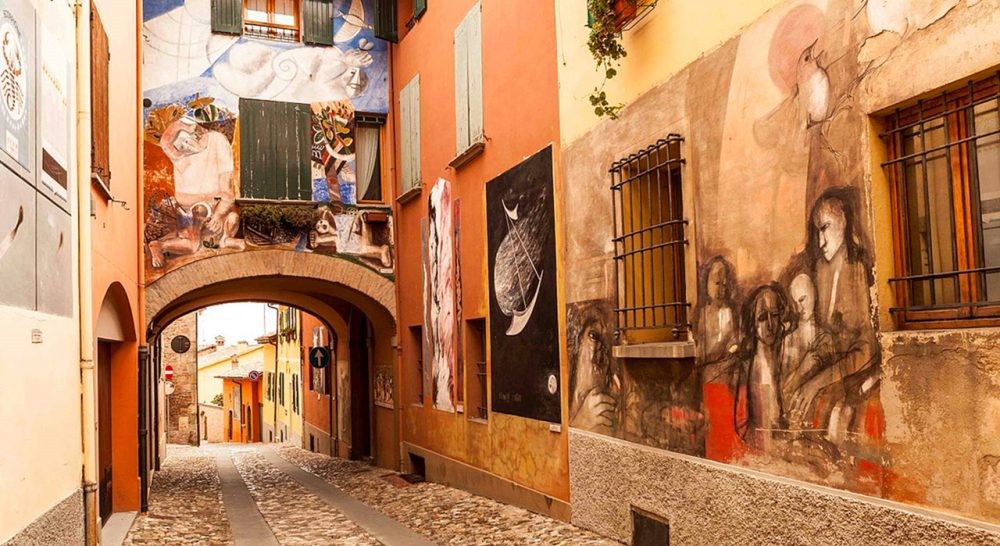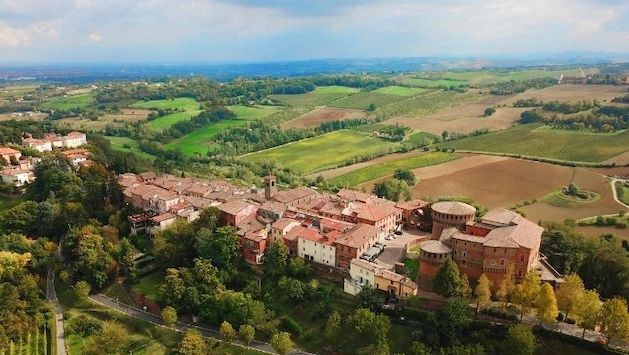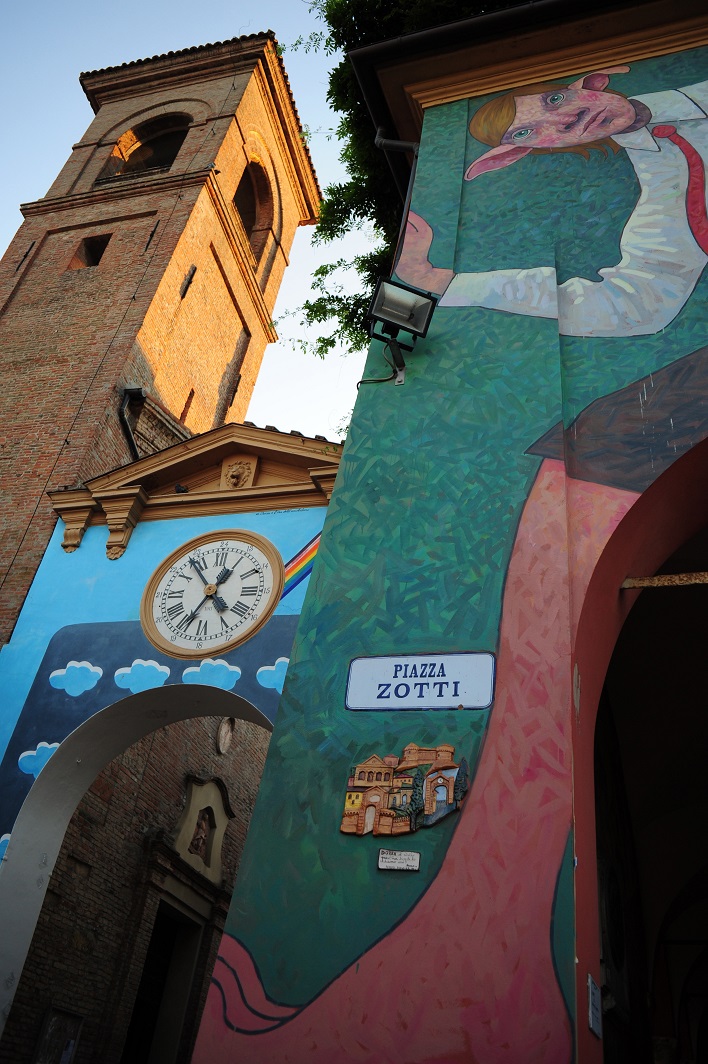The area around Bologna abounds in small towns and characteristic villages that reveal the history of our territory. Today we set off for Imola to discover Dozza!
Named one of the most beautiful villages in Italy, Dozza lies on a ridge between gentle slopes of vineyards and impressive gullies.
Ducia, as it was called by the ancients, is a small treasure chest that holds endless surprises among history, art, wine and fantasy...
©Dozza (Bo),Aerial view of DOzza, Archiovio sito Crinali, CC BY NC ND 4.0
Disputed over the centuries for its strategic position, Dozza owes its name to an ancient aqueduct that channelled water from nearby Monte del Re into a sort of cistern for the benefit of the local population.
Hence Ducia (or Dutia), literally the conduit for water, is represented in the town's coat of arms: a griffin drinking from a spring.
Its characteristic tapered shape, long and narrow, is crossed by only two roads: the Contragrande and the Contrecina, which connect the entrance to the village, the Rivellino, to the hilltop dominated by the imposing Rocca sforzesca.
We owe the name of the castle and its appearance as a fortified palace to the emblematic figure of Caterina Sforza. Visitors can now take a journey through history by visiting the Rocca and walking through the rooms and original furnishings of this former noble residence.
©Dozza (BO), Piazza Zotti, ph. Stefano Calamelli, archivio Imola Faenza, CC BY NC ND 4.0
The castle cellars have been home to the Enoteca Regionale dell'Emilia-Romagna since 1970.
Dozza's geographical position, straddling the border between Emilia and Romagna, makes it the ideal place to represent and enhance the wine production of the entire region.
The more than one thousand labels available provide the perfect opportunity to take a 360-degree wine tour of the region. Tastings, training courses and visits with sommeliers are some of the experiences on offer.
For wine lovers or simply for those who wish to explore this world at close quarters, a delightful wine trail connects four Dozza wineries where to savour the excellence of the territory, walking through hidden corners and enchanting bucolic landscapes.
Yet Dozza is primarily a timeless and borderless art gallery, a unique jewel of its kind.
In 1960, on the occasion of the opening of the Rocca Sforzesca to the public, a competition called the "Painted Wall" was held. The event was so successful in its first edition that it became a regular appointment: "The Biennial of the Painted Wall".
The event almost immediately lost its connotation as a competition and instead brought out the essence of the artists.
Today, as in the past, it is still possible to admire them live and interact with them as they work on their creations.
The walls of the houses in the precious village thus come to life through spectacular works of art.
No ticket required, no timetable, no barriers.
The artistic itinerary continues in Via Sant'Anastasia just outside the village's medieval walls.
The rolling hills surrounding Dozza provide the backdrop for a unique illustrative exhibition, with the artists' walk representing a fusion of real landscapes with the imaginative and artistic world.

One more of the many surprises Dozza is able to offer is the presence in the village of the Tana del Drago (The Dragon's Lair): the first study centre dedicated to JRR Tolkien. This centre is a place of discovery and study for all enthusiasts of the genre. Every two years, Fantastika, the biennial festival of fantasy illustration, brings this fairy-tale world to life through live performances, conferences and much more.
If you come to Dozza with your children, don't forget to enter the Rocca during the event. Fyrstan reawakens only on this occasion!


